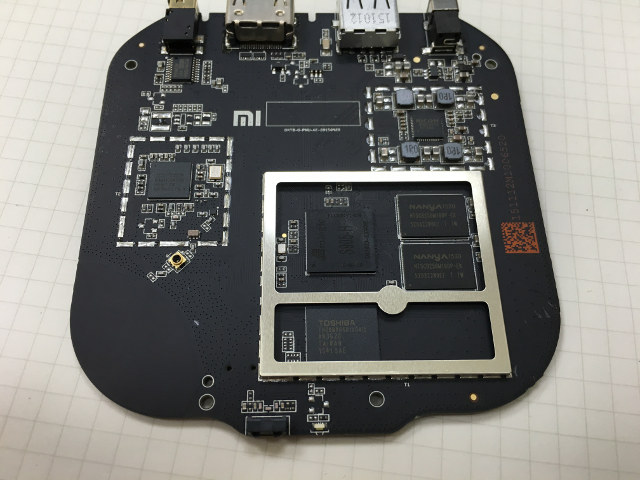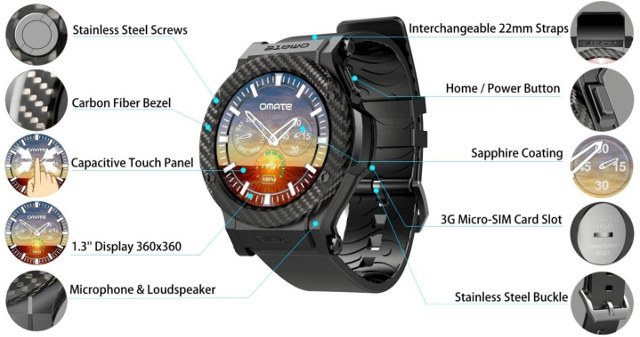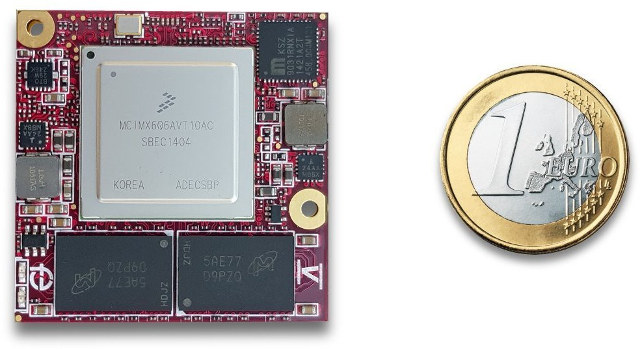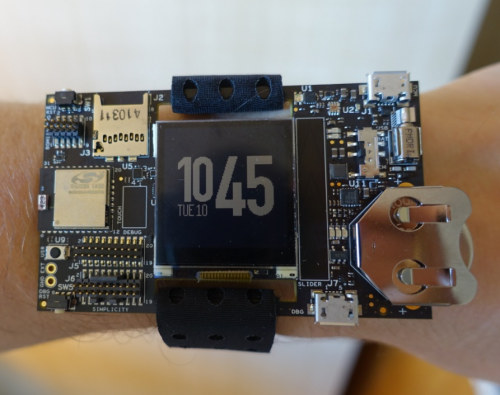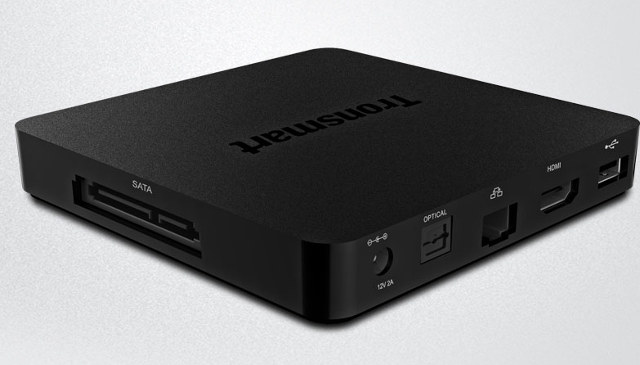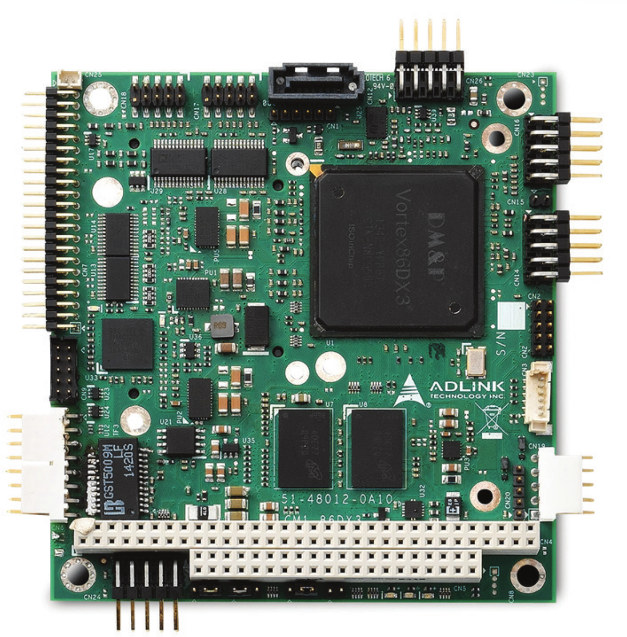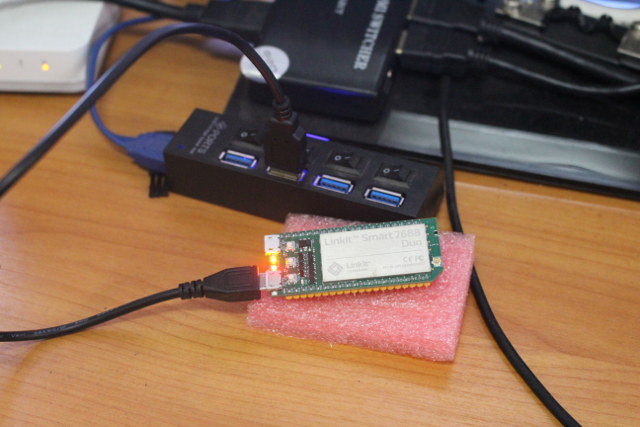Xiaomi unveiled Mi 3 TV box based on Amlogic S905 processor a while ago, but since we’ve got so many Amlogic S905 boxes on the market, and the interface is only in Chinese, I did not find it that interesting. But somebody did a teardown of the device, and sent me some good pictures revealing that the device uses Amlogic S905-H with DTS and Dolby licenses paid for and enabled. So that means just like for Amlogic S812, where there’s a S812-H with Dolby and DTS, there are two versions for Amlogic S905. I understand the silicon might be the same, but the SDK will differ (TBC). Other main components include a 4GB Toshiba THGBMBG5D1KBAIT eMMC 5.0 flash, two NANYA NT5CB256M16DP-EK 512MB DDR3 chips (1GB in total), a Broadcom wireless chipset (BCM4345) for 802.11ac Wifi and Bluetooth 4.1, and Ricoh RN5T567A PMIC. There are few connectors as on other Xiaomi […]
Omate Rise is a $199 3G and WiFi Smartwatch Powered by Mediatek MT2601 SoC (Crowdfunding)
Most smartwatches sold on the western markets are designed to be smartphone’s companions, and only come with Bluetooth LE connectivity, while we’ve seen many smartwatches (aka watchphones) with SIM card slot originating from China in the past, including the lower end No.1 D3 smartwatch which I reviewed recently. But this may be changing, as Omate is going to launch a new smartwatch called Omate Rise that will include 3G connectivity via a micro SIM card slot, as well as WiFi, Bluetooth Smart, and GPS. Omate Rise specifications: SoC – Mediatek MT2601 dual core ARM Cortex A7 @ 1.2GHz with ARM Mali-400 MP GPU System Memory – 512MB RAM Storage – 4GB flash Display – 1.3″ round muti-touch color display with 360×360 resolution (Innolux) Connectivity – Bluetooth 4.1 LE (A2DP profile), WiFi 802.11 b/g/n, GPS Cellular Connectivity – 3.5G HSDPA (2100/1900 MHz), GPRS / EDGE /GSM (850/900/1800/1900 MHz); micro SIM card […]
iMX6 TinyRex Module and Development Board Support HDMI Input in Linux (Video Demo)
A couple of years ago, I wrote about iMX6 Rex open source hardware project combining a Freescale i.MX6 SoM and baseboard that aimed a teaching hardware design (schematics and PCB layout). I had not followed the project very closely since then, until I watched a video showcasing HDMI input capabilities in Linux using the new version of the module and baseboard called i.MX6 TinyRex. i.MX6 Tiny Rex module specifications: SoC – Freescale iMX6 processor up to 1.2GHz and 4 cores System Memory – Up to 4GB DDR3-1066 (533MHz) Storage – EEPROM Connectivity – 10/100/1000 Mbps Ethernet PHY I/Os via 3 board to board connectors: Display / Video Output 1x HDMI (up to QXGA 2048×1536) 1x LVDS (up to WUXGA 1920×1200) 1x 20-bit parallel LCD display (up to WXGA 1366×768) or 1x Video Input (CSI) 1x MIPI DSI differential display output (up to XVGA 1024×768) Video Input 1x 20-bit parallel video input […]
Thunderboard Wear is a $75 Smartwatch Development Board by Silicon Labs
A few days ago I watched an ARMDevices.net’s video about an ARM’s smartwatch reference design running mbed OS 3.0, powered by a Silicon Labs EFM32 Giant Gecko Cortex M3 MCU, and promising up to 2 months battery life on a 160 mAh battery. While I could not find the full details about the reference design, I noticed Silicon Labs also launched a development board called Thunderboard Wear, based on the same platform, just quite bigger, and still wearable… (Sort of) Thunderboard Wear specifications: MCU – Silicon Labs EFM32GG995F1024 ARM Cortex-M3 MCU up to 48 MHz with 128 kB RAM,1 MB Flash External Memory – 256 kB external SRAM External Storage – micro SD card slot Display – 128×128 pixel Memory LCD from Sharp Connectivity – Bluetooth 4.1 smart module (Silicon Labs BGM111), upgradeable to Bluetooth 4.2 Sensors Ambient Light Sensing (ALS) and Proximity/Gesture via Silicon Labs Si1141. Optical hear-rate monitoring […]
Tronsmart Vega S95 4K Android TV Box Features an External SATA Port
Tronsmart is adding three new devices to the long list of Amlogic S905 TV boxes on the market with: Vega S95 Pro – 1GB RAM, 8GB flash, AP6212 wireless module (2.4GHz WiFi + Bluetooth 4.0) Vega S95 Meta – 2GB RAM, 8GB flash, AP6330 wireless module (Dual band WiFi + Bluetooth 4.0) Vega S95 Telos – 2GB RAM, 16GB flash, AP6335 wireless module (802.11 b/g/n/ac WiFi + Bluetooth 4.0), and SATA All three models also include Gigabit Ethernet. The Pro and Meta models have a lot of competition, but Telos is quite unique so far, as it’s the first to include a SATA port. Tronsmart Vega S95 Telos specifications: SoC – Amlogic S905 quad core ARM Cortex-A53 @ up to 2.0GHz with penta-core Mali-450MP GPU @ 750 MHz System Memory – 2GB DDR3 Storage – 16GB eMMC 5.0 flash by Samsung + SATA connector + SD card slot Video HDMI […]
ShiftWear Shoes Integrate a Flexible e-Paper Display, Energy Harvesting Capabilities (Crowdfunding)
ARM CTO, Mike Muller, showcase imprinted electronics, that is an integrated circuit printed on a plastic film, at ARM TechCon 2015, and several products are featured flexible displays, so in future flexible electronics could bring innovation applications from truly wearables electronics to traceable bank notes, and so on. A company has launched an Indiegogo campaign for a new product, that’s both cool and relatively useless, with ShiftWear sneakers that integrate a flexbile e-Paper display, a battery that recharges by harvesting energy from your steps, and some connectivity (likely Bluetooth LE) to update the display from your iOS, Android or Windows device. Three models are available: L1, M1 and H1 referring to low height, medium height and high height of the part around the ankle (heel tab?). But all three have basically the same features: Always-on HD color e-paper flexible display Up to 30 days of battery life Waterproof up to […]
ADLINK CM1-86DX3 Dual Core Vortex86DX3 SBC Complies with PC/104 Standard
Adlink has recently introduced a rugged industrial single board computer based on PC/104 standard with anISA bus, and powered by DM&P Vortex86DX3 dual core processor combined with 2GB RAM, SATA and CFast for storage, and Fast & Gigabit Ethernet for networking. Adllink CM1-86DX3 board specifications: SoC – DM&P Vortex86DX3 dual core x86 processor @ 1GHz with 2D GPU, FPU, 32K I-Cache, 32K D-Cache, and 512KB L2 Cache Memory – 2GB DDR3L Storage – SATA, CFast socket. Video Output – VGA; 18/24-bit single-channel TLL/LVDS Connectivity – 1x integrated Fast Ethernet, 1x Gigabit Ethernet (via Intel i210T) USB – 2x USB 2.0 Serial – 2x RS232/422/485,2x RS232, Other I/Os -8x GPIO, 8x A/D Misc – RTC; watchdog; PS/2 port; Smart Embedded Management Agent (SEMA) functions such as a timer, temperature. monitor, fail-safe BIOS, etc… Power Supply – 5V DC (AT mode); Consumption: ~6-7 W Dimensions – 96 x 90mm (PC/104 specifications 2.6 […]
Quick Start Guide for LinkIt Smart 7688 (Duo) Board
Mediatek Labs has announced LinkIt Smart 7688 development boards powered by Mediatek MT7688 WiSoC earlier today, but I was selected for a close beta several weeks before the launch, and I’ve had time to play a little with the boards, so today I’ll report my experience getting started with LinkIt Smart 7688 amd 7688 Duo by writing a Quick Start Guide showing how to setup the boards, upgrade firmware, access the serial console, run “Blink LED” sample applications with Python and JavaScript, as well as the Arduino IDE, and connect to the Internet. Initial Setup You’ll only need a micro USB cable and a computer with WiFi and USB ports to get started with the board. The green LED (top) for the MCU will turn on immediately, while the red LED (bottom) for WiFI will blink once, and only turn on continuously after 5 seconds, and within 30 seconds after […]


